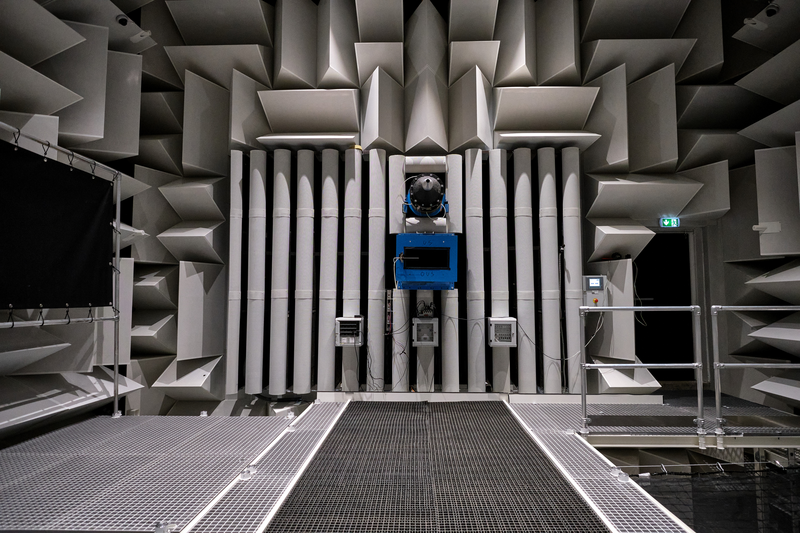Since the early 1980s, Centrale Lyon has had a number of wind tunnels on its Lyon-Écully campus, leading to specific test rooms known as "deaf chambers" or "anechoic chambers", which together form what are known as anechoic wind tunnels. Thanks to controlled flow conditions and an unpolluted sound environment (without echo), such experimental set-ups enable us to understand the mechanisms of aerodynamic noise and devise solutions to reduce it.
Research challenges:
- Reducing noise pollution from complex systems generating or subjected to airflow
- Optimizing the overall environmental impact of these systems: energy consumption, maintenance, recycling...
Application fields:
- Air, rail and automotive transport: new aeronautical propulsion systems, optimization of aircraft fuselage and land vehicle shape, optimization of helicopter and UAV blades...
- Wind power generation, pressure piping, ventilation or air conditioning systems...

Instrumentation:
Many hundreds of microphones, temperature, pressure and air velocity sensors to simultaneously measure noise and flow.
Mach 1.6
supersonic wind tunnel maximum flow speed (approx. 2000 km/h)
Mach 0.8
maximum flow speed of subsonic wind tunnel (approx. 1000 km/h)
20 dB(A)
residual noise in the deaf room
1000 m3
deaf room volume
